A rare and historically significant hand-carved woodblock for devotional image printing, executed in fruitwood (likely pearwood), depicting the Pietà — the Virgin Mary mourning the dead Christ — surrounded by the Arma Christi (Instruments of the Passion) and the symbolic Seven Sorrows of Mary, represented by swords piercing her heart. This exceptionally preserved block embodies the Baroque period’s Catholic devotional sensibilities, combining pathos, symmetry, and symbolic density.
The composition is carved in high relief with crisp, controlled linework and deep incisions, showing the hand of an experienced religious artisan. The iconography is centered on the mourning Virgin beneath the Cross, flanked by rich Passion symbols: the ladder, the dice, the nails, the scourges, the rooster, the lantern, the spear, and others, rendered with clarity and solemnity. The layout is both symmetrical and meditative — a spiritual tableau that encourages contemplation in the manner of Jesuit-influenced Counter-Reformation art.
Material & Craftsmanship:Material: Fruitwood (pear or similar), finely grained, richly patinated.
Technique: Hand-carved, relief-cut (recto); hand-planed tool marks visible on verso.
Wear: Considerable evidence of repeated use, including ink residue on surface, edge wear from press contact, and age-consistent wormholes.
Construction: Multi-panel assembly, joined without nails or modern fasteners.
22.5 x 31 cm
Circa 1680–1750 (Baroque Period)
Region:Likely Eastern France (Épinal/Lorraine) or Southern Netherlands (Flanders)
Provenance:Formerly part of the stock of Imagerie d’Épinal, the celebrated 19th-century French popular image printer.
Acquired on 25 April 1939 from Mr. Wolkenwald, an antiques dealer in Épinal, as noted in a handwritten label affixed to the reverse.
The note also documents wartime destruction of remaining stock (1940) and a revisitation in 1957.
This block reflects the devotional aesthetic of the Baroque period, with clear ties to Counter-Reformation religious practice. The combined representation of the Pietà, the Seven Sorrows of Mary, and the Arma Christi situates this work squarely within the Catholic visual tradition of didactic sacred imagery. Such blocks were used to create small devotional prints for home altars, pilgrims, or parishioners — a tradition nearly lost with the rise of mechanized lithography in the 19th century.


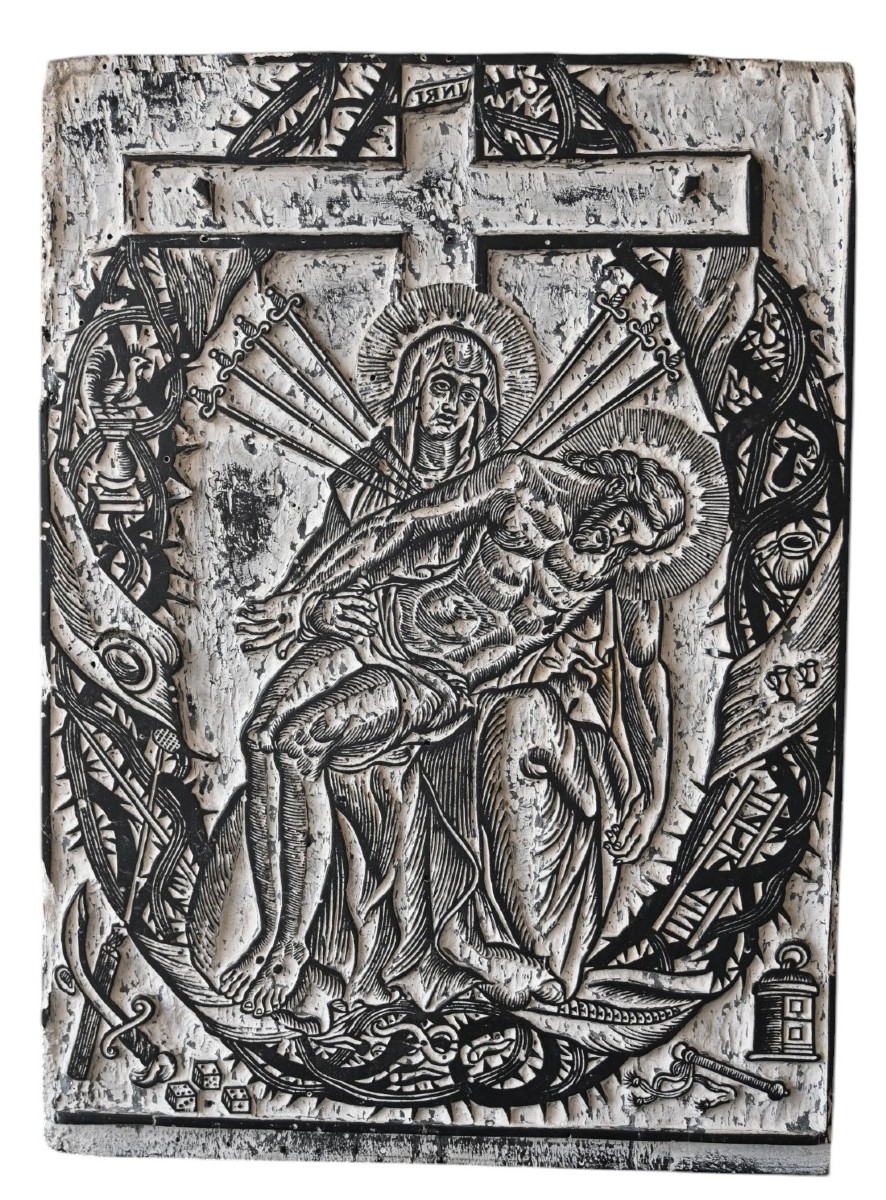
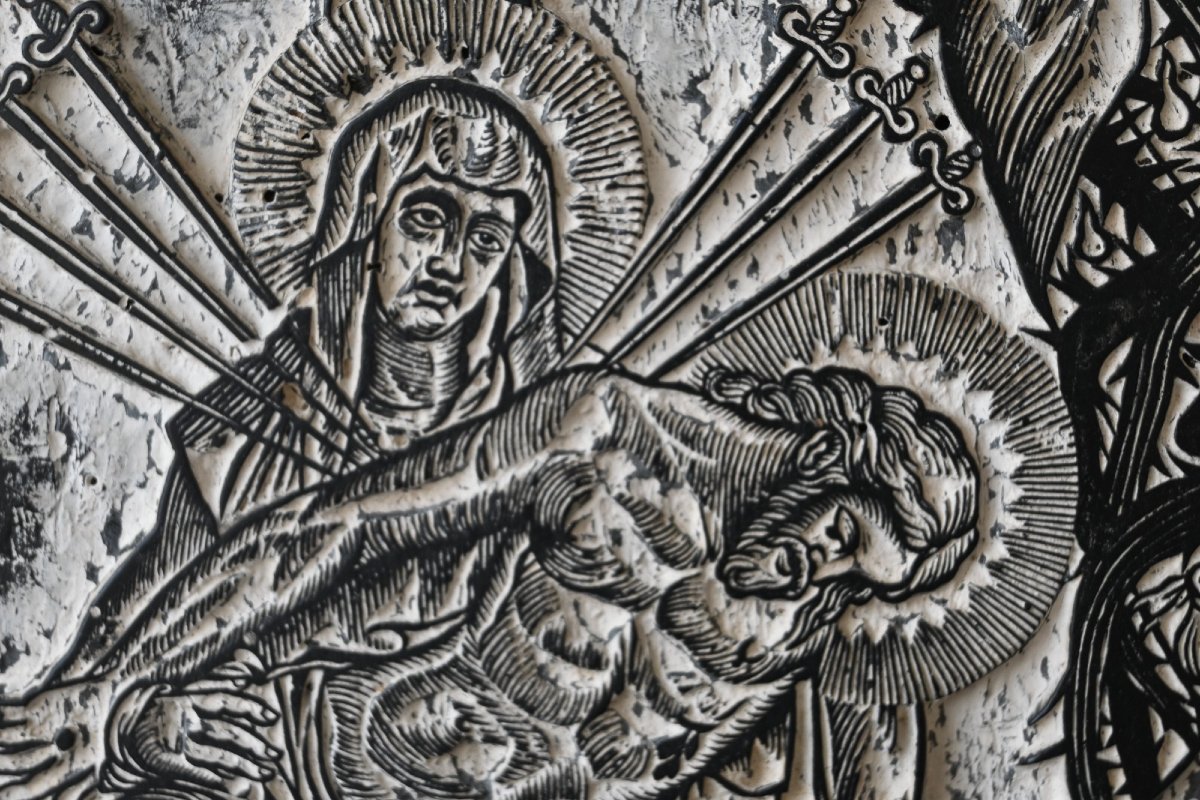




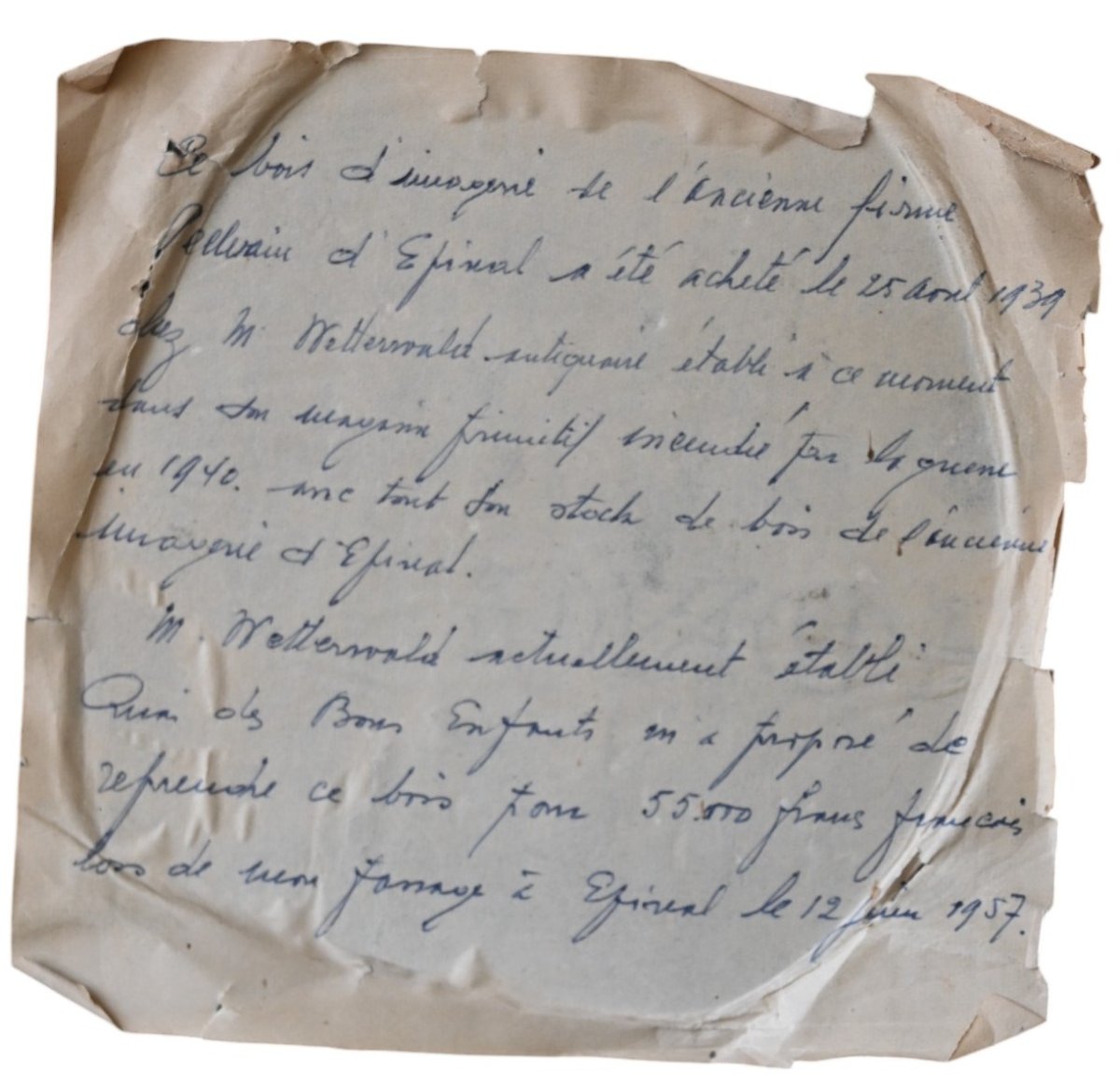














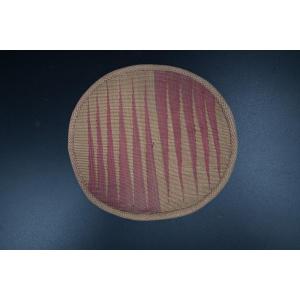



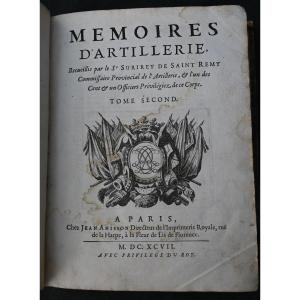





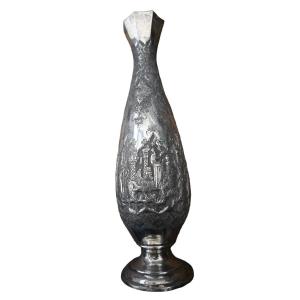



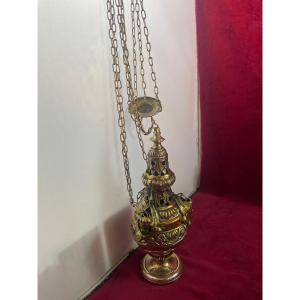
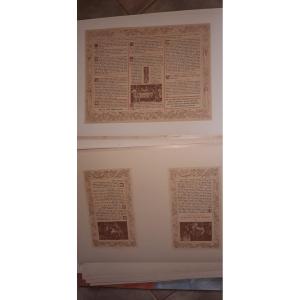



 Le Magazine de PROANTIC
Le Magazine de PROANTIC TRÉSORS Magazine
TRÉSORS Magazine Rivista Artiquariato
Rivista Artiquariato